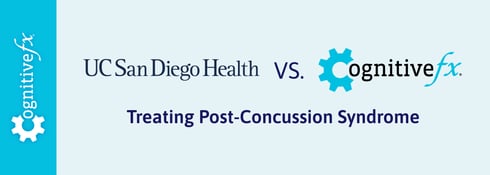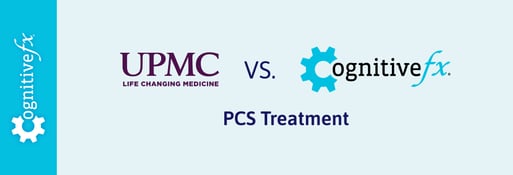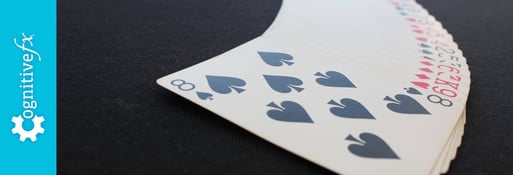The topic of football concussions is a controversial one. If you’re a football player worried about the long-term health of your brain, it can be confusing to wade through all the information out there. Opinions range anywhere from people claiming that all the worry about football concussions is ruining the game to those who want to ban tackle football, for children (since kids who play tackle football sustain 15 times more head impacts than children who play flag football, according to the CDC).
In the past, “getting your bell rung” was nothing out of the ordinary in football — it was just the nature of the game. Players were expected to get back up, shake it off, and keep playing. However, the discovery of the link between repeated football head injuries and chronic traumatic encephalopathy (CTE) in the brains of former professional football players by doctors Bennet I. Omalu and Julian Bailes in 2002 led to more research and awareness of the long-term dangers of concussions.
Today, we know more about what happens in the brain during a concussion. We know that an athlete who sustains one concussion is 4-6 times more likely to sustain another. We know that many players return to play before healing or don’t report their concussion symptoms at all. When they do this, they put themselves at risk for more severe injuries, the worst of which is the rare but potentially deadly second impact syndrome (SIS).
Returning to play before healing also increases the risk of developing symptoms that don’t go away as quickly or that don’t go away at all without treatment (a condition known as post-concussion syndrome). Players should know the signs of post-concussion syndrome (PCS) and get treatment as soon as possible if their concussion symptoms persist. PCS affects up to 30% of all concussion patients. We’ll share some resources to learn more about it later in this post.
To help you make informed decisions about your sport and your health, we address many of the questions and concerns that athletes have about football concussions, including:
If you’re suffering from symptoms that won’t go away after a football concussion, you’re not alone, and you’re not imagining things. We can help. On average, our patients improve by 75% after treatment at our clinic. If you’d like to learn more about whether we can help you, schedule a consultation.
Note: Any data relating to brain function mentioned in this post is from our first generation fNCI scans. Gen 1 scans compared activation in various regions of the brain with a control database of healthy brains. Our clinic is now rolling out second-generation fNCI which looks both at the activation of individual brain regions and at the connections between brain regions. Results are interpreted and reported differently for Gen 2 than for Gen 1; reports will not look the same if you come into the clinic for treatment.
What Is a Concussion?
Before we get into details about concussions from football, let’s briefly cover what causes concussions.
The brain is suspended in fluid inside the skull. The purpose of this fluid is to create a buffer between soft brain tissue and the skull. A concussion, also called a mild traumatic brain injury (mTBI), happens when a sudden force causes the brain to crash into the skull.
This can be from a direct hit to the head or from a whiplash-type motion (front-to-back or side-to side). It can lead to inflammation or bruising inside the brain and cause nerve tissues to stretch. The result is that some areas of the brain might not work as they are supposed to, causing concussion symptoms.
Symptoms of a concussion might appear immediately, the next day, or even weeks later. Delayed symptoms make it harder to diagnose a concussion. This chart goes over common concussion symptoms:
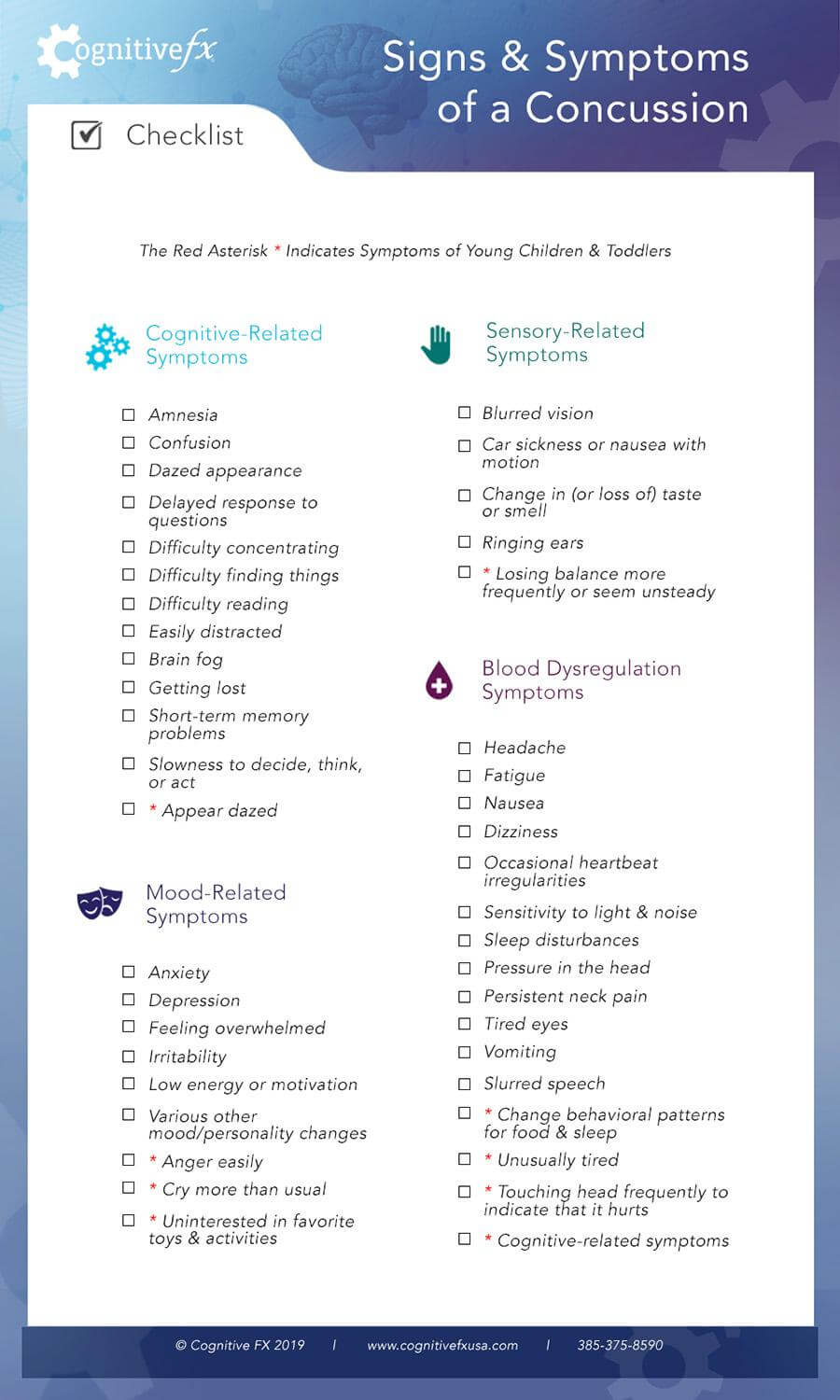
While there’s no predicting exactly which symptoms of concussion you’ll experience, some tell-tale symptoms for football players can be:
- Headaches or neck pain
- Blurry vision or tired eyes
- Brain fog
- Cognitive problems
- Irritability, anxiety, or depression
- Dizziness
- Nausea.
If you’re not sure if you’ve had a concussion, read this post on how to know if you’ve had a concussion.
Football Concussion Myths and Misconceptions
.jpg?width=1000&height=445&name=shutterstock_124650124%20(1).jpg)
Can I Have a Concussion If I Didn’t Get Knocked Unconscious?
Yes, you can have a concussion even if you didn’t get knocked out. Loss of consciousness only occurs in less than 10% of concussions. Symptoms of a concussion might not even appear immediately; it could take several days for them to show up. It’s important to be aware of the many different symptoms of concussions and to get checked out if you experience any of them after a fall or impact that was jarring.
Can I Have a Concussion If I Didn’t Hit My Head?
Yes! In football, helmet-to-helmet contact is one of the most common sources of a concussive impact, but any kind of jarring impact that causes the head to whip back or to the side suddenly can cause the brain to crash against the skull. This impact — the brain hitting the skull — is what causes a concussion. It can happen if you get shoved hard and lose your balance, if you get knocked to the ground without hitting your head, or even if you just suddenly trip and fall.
Do Football Helmets Prevent Concussions?
Football helmets do not prevent concussions. They might help reduce a concussion-causing impact somewhat, but they are primarily designed to prevent traumatic brain injuries and head trauma (such as skull fractures).
Remember that the brain is suspended in fluid inside the skull. A helmet fits snugly on the skull, not the brain. If a player takes a hard hit on a play, the force of the impact still causes the brain to move inside the skull. If the impact of the brain against the skull is hard enough, the player gets a concussion.
If you’d like to read more about common misconceptions about football helmets, read this interview with Dr. John Leddy. Dr. Leddy, a respected concussion researcher based in New York, is the president of the International Concussion Society.
Do All Football Players Need to Worry About Concussions, or Just the Professionals?
While former NFL players may have to worry about concussions more than others, anyone of any age can sustain a concussion, and statistics show that if you’re an athlete who has had one concussion, your chances of having another within the same season are much greater. Forty percent of athletes don’t fully recover before they go back to participating in their sports, which increases their chances of additional injury and long-term consequences. The effects of multiple concussions can be cumulative in those athletes. If you think you might have sustained a concussion, take yourself out, get checked out, and follow a safe return-to-play timeline.
Note: If you’re experiencing symptoms that won’t resolve after a traumatic brain injury, you’re not alone. And you’re not crazy. On average, our patients improve by 75% after treatment at our center specializing in post-concussion therapy. To see if you are eligible for treatment, schedule a consultation.
What Are the Leading Causes of Football Concussions, and Who Gets Them?
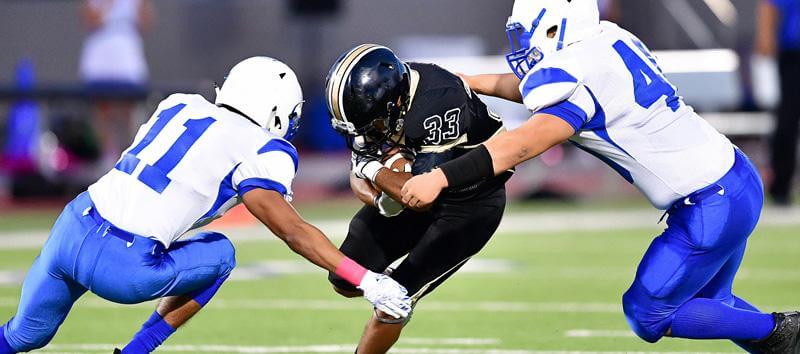
When a player gets knocked unconscious and has to be carried off the field, it’s obvious that a serious injury has taken place. The player will get immediate medical attention. But 90% of concussions occur without the loss of consciousness. Sometimes players initially seem okay and continue to play, only to have symptoms hit the next day.
Concussions affect people in unpredictable and varying ways. Football players are no different. Symptoms of a football concussion can include any of the common concussion symptoms.
Common Causes of Football Concussions
The most common origins of football concussions that we see in our clinic are from helmet-to-helmet contact in blocking and tackling and from head-to-ground impacts. It’s important to remember, however, that anyone can suffer a concussion from being hit or jostled hard enough.
NFL and College Football
For the time period of 2012-2019, the National Football League (NFL) Injury Data shows that an average of 242 NFL players per year sustained concussions. Some statistics state that about 10% of all college players experience a brain injury every season.
Discovery of the link between repetitive head injuries in former American football players and CTE has dramatically increased concussion and brain injury awareness along with initiatives to protect players. CTE is a degenerative disease that appears to be caused by repetitive hits to the head over a period of years. Its symptoms include memory loss, personality changes, confusion, and other difficulties associated with dementia and brain damage.
Studies of CTE are ongoing, and there is still a lot of uncertainty about the disease, but researchers currently believe that the younger an athlete is when they begin playing contact sports, the more at risk they are for eventually developing this brain disease.
A recent study of brains donated by deceased former football players found CTE in 99% of the brains of NFL players, in 88% of Canadian Football League players, and in 91% of college football players. Athletes who reach this level of the game have been playing football and sustaining impacts for many years and are thus at a higher risk of developing CTE.
High School Football
Statistics show that about 20% of all high school football players experience brain trauma every football season and that football is responsible for more than 60% of concussions in high school sports. The players that incur the highest percentage of concussions in defensive positions are linebackers, and in offensive positions, running backs.
Concussions also account for a large percentage of injuries sustained by cornerbacks and tight ends. Almost half of concussions happen during running plays, with approximately two-thirds of them resulting from player-to-player contact, especially during tackling.
High school players also need to worry about the long-term effects of subconcussive hits. A pilot study published in 2018 showed changes in the white matter of players’ brains after only one season of play. This type of research is still in the early stages as scientists strive to determine the effects of concussive and subconcussive hits (meaning, not bad enough to cause a concussion) by age and length of time exposed.
Youth Football
There haven’t been many studies looking at youth football player concussions. However, many parents and medical professionals question the safety of tackle football in this age group, given what we know about the effects of multiple concussions and repetitive, subconcussive hits.
One small study determined that children as young as 7 and 8 years old can experience high impact collisions during the game. Using sensors, the researchers measured impacts of more than 40 times the force of gravity on these players.
The majority of these impacts occurred during practice. These young players experienced more impacts to the sides of their helmets, usually from hitting the ground after being tackled. It’s important to note that children usually have weaker neck muscles than teens and adults, putting them more at risk for concussions caused by rotational force.
Multiple Concussions
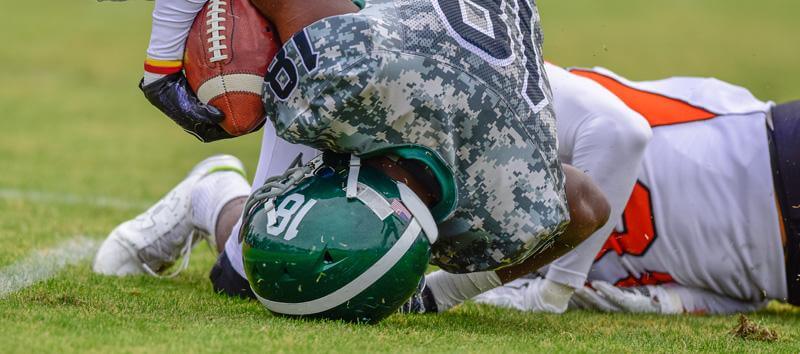
Athletes of any age who have had one concussion are much more likely to sustain another. Those who suffer multiple concussions are at risk for developing long-term effects, especially if they return to play before fully healing from a previous concussion. You can click here to read about the symptoms and effects of multiple concussions.
Note: If you’re suffering from symptoms that won’t go away after a football concussion, you’re not alone, and you’re not imagining things. We can help. On average, our patients improve by 75% after treatment at our clinic. If you’d like to learn more about whether we can help you, schedule a consultation.
Can We Prevent Football Concussions?
.jpg?width=1000&height=445&name=shutterstock_1926517%20(1).jpg)
Increased awareness of the dangers of brain injuries has led to a growing demand for ways to prevent football concussions. Nothing can completely prevent football concussions, but researchers and manufacturers are working to improve or transform existing equipment to reduce the number of concussions from football.
Additionally, they hope to incorporate technology into gear that’s capable of at least warning that a concussive hit may have taken place, so the player can be pulled from play and examined.
To advance this effort, the NFL has pledged $60 million to their Engineering Roadmap initiative. The goal is to advance the study of the biomechanics of football and to create financial incentives for the development of better safety equipment.
Most product research and development has focused on attempts to improve helmets and mouthguards, with some incorporating sensors that can monitor players for potential concussions. New products, such as protective collars, are also being used to try to protect football players during forceful impacts.
In this section, we’ll review the current state of developments in helmets, mouthguards, and protective collars, along with other preventative measures you can take.
Helmets
Design
Helmets can’t prevent concussions; they are designed to prevent traumatic injuries like skull fractures. Unfortunately, helmets may give players a false sense of security, and some players have inappropriately misused their helmets as weapons during games (putting themselves at higher risk for concussion). Researchers are looking for ways to make helmets safer for players.
An example of an innovative helmet that has been developed is the VICIS Zero1. It was designed to absorb impact better than a traditional helmet. It also increases the player’s field of vision in hopes of allowing a player to be better prepared for an upcoming impact.
Many helmet manufacturers claim that their helmets reduce concussions, but real-world research is limited and difficult to conduct. The Virginia Tech Helmet Lab is an independent lab that studies injury biomechanics. They also evaluate helmets through a series of impact tests and rate them according to their ability to reduce concussion risk. This allows consumers to have some kind of objective data to make a more informed purchasing decision.
Sensors
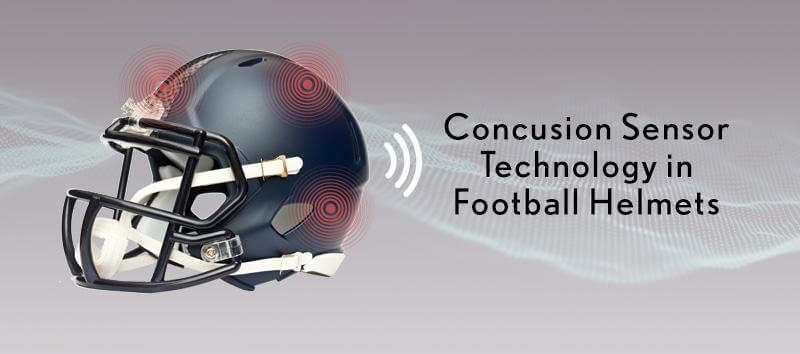
With the acknowledgement that concussions happen despite helmets, other researchers and manufacturers have looked to technology to alert players and coaches that a potentially concussive hit has taken place.
For example, Ridell’s InSite Smart Helmet Technology uses sensors in helmets to try to identify concussive impacts. The sensors send an alert when an impact exceeds a certain threshold, allowing that player to be identified and pulled for evaluation. The technology also tracks individual player’s impact trends in a database, allowing for intervention in training and technique where indicated. This approach might decrease future harmful impacts.
Mouthguards
Mouthguards were originally invented to help protect boxers from lip lacerations but were later used by athletes in many contact sports to help prevent dental and facial injuries. The idea that they could also help prevent concussions eventually evolved from the theory that they help stabilize the head and neck and limit movement.
Some researchers say that while there’s evidence that they can help prevent dental and oro-facial injury, there’s very little evidence that mouthguards can do anything to prevent concussions.
Other researchers say that while over-the-counter (OTC) mouthguards are ineffective in preventing concussions, there is evidence that custom-made, properly fitting mouthguards do make a difference. Custom-made mouthguards are about twice as thick as OTC mouthguards. Manufacturers claim they are better at absorbing the forces that can contribute to a concussion.
Some makers of mouthguards are also adding sensors to their products. Prevent Biometrics created the Impact Monitor Mouthguard. It has a sensor that tracks, records, and transmits head impact data to someone on the sidelines using an iPad or iPhone. Data received from the mouthguard can be used to determine if a player needs to be evaluated on the sidelines. Its creators say it’s more accurate than helmet sensors because the sensors are placed against the roof of the mouth, versus on a helmet that moves independently of the body.
Force Impact Technologies’ FITGuard is another mouthguard product with a sensor that is currently being developed. This product has LED lights that illuminate red when an athlete experiences an impact with enough force to cause a concussion. The purpose of this product is to clearly indicate when a player needs to be removed from play for medical evaluation, instead of relying on athletes to self-report. This product also transmits data wirelessly. It can be programmed for the individual athlete’s sex, age, and weight, potentially making it more accurate.
Protective Collars and Compression Equipment
Some scientists have been working to create completely new protective equipment that they hope will actually prevent concussions from happening during a forceful impact. Here are a couple of recent innovations that are being tested and used.
QCollar
QCollar’s inventors set out to create a product that would reduce the brain’s movement inside the skull. The QCollar is a small collar worn around the neck. It applies light pressure to the jugular vein to increase blood volume in the brain. The theory is that this then reduces the amount of room available for the brain to slosh around, thus possibly preventing a concussion. They report that independent studies show a significant reduction in structural brain changes in athletes who wore the collar for a season.
This product is for sale in Canada, but it has not yet received approval to be sold in the United States. Some who have been part of the clinical trials are convinced it’s effective, but other scientists dispute the science behind it.
HALO collar
The AEXOS HALO collar is a compression shirt with a collar that stiffens upon impact. The shirt’s purpose is to provide upper body posture support. The collar is designed to stiffen upon sudden impact with the purpose of reducing whiplash and rotational acceleration and deceleration, both of which can cause a concussion. The creators compare it to an airbag for the head and neck.
Who Is Using These Products?
Whether or not these product innovations are truly effective in preventing or at least reducing the number of concussions is still under debate. Some of them are still in the testing phase. Others are available in limited markets. While some athletes have the means to purchase these products for their personal use, much of it is only being used at the college or professional level (due to the financial expense involved).
What Else Is Being Done to Prevent Football Concussions?
Outside of technological innovation, most efforts to prevent concussions in football are being focused on rule changes and teaching proper technique.
- The NFL has made several changes in recent years to try to protect players from concussions. For example, in 2018, the kickoff line was moved to the 35-yard line. The NFL reports that this has resulted in a 34% decrease in concussions on kickoff plays. In 2013, the crown-of-helmet rule made it illegal for a player to use the top of his helmet against another player. In 2019, the “blindside block” was eliminated. Additionally, an unaffiliated neurotrauma consultant must be on the sidelines of every game.
- USA Football implemented their Heads Up Football program for youth, middle school, and high school programs. In addition to teaching how to recognize and respond to concussions, the tools include proper technique training to avoid injury in the first place. Some initial studies show that techniques such as the “heads up” vertical tackle style have the potential to reduce concussions by reducing head acceleration.
- Pop Warner Little Scholars instituted some rule changes in 2012 to try to protect young players from injury. Most notably, they reduced the amount of contact time in practices and banned full-speed, head-on blocking and tackling drills when players are lined up more than 3 feet apart.
Note: If you’re suffering from symptoms that won’t go away after a football concussion, we can help. 95% of our patients experience statistically verified restoration of brain function after treatment at our clinic. If you’d like to learn more about whether we can help you, schedule a consultation.
Diagnosing Concussions in Football Players
As of yet, there is no 100% accurate test to diagnose a concussion on the sidelines. Unlike a broken bone or a bleeding gash, a brain injury is not always easy to see. Also, concussions affect people in different ways.
To complicate matters, symptoms of a concussion might not appear immediately. There might be a delay of hours or even days before symptoms emerge. However, there are methods and protocols currently in place to help indicate an athlete has sustained a concussion and needs to be further evaluated.
Self Reporting: When Something Doesn’t Feel Right
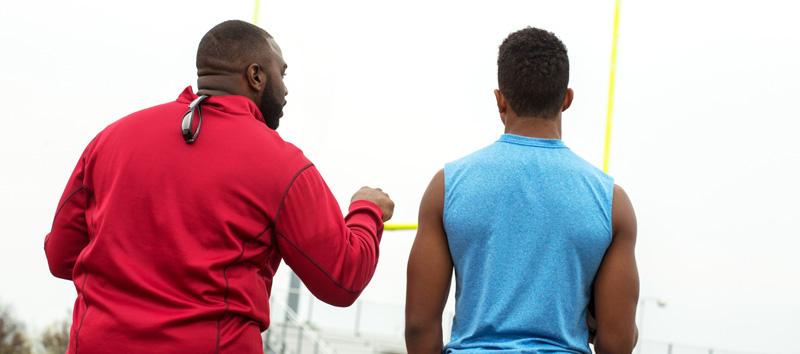
Being aware that something is not right and telling a coach or trainer immediately is the ideal response from an athlete. Unfortunately, this doesn’t always happen for a variety of reasons. Sometimes players think they’re okay, or that whatever they’re feeling will go away in a few minutes.
Other players just don’t want to be taken out of the game and try to hide their symptoms. They might be focused on winning the game or don’t want to disappoint their teammates. Sometimes they might be worried about how long the concussion protocols will take, and they just don’t want the hassle.
Another reason some players continue to play is because of an old and common stigma associated with football: the belief that you’re weak if you take yourself out. Football is a tough game for tough players, but maintaining an image isn’t worth risking a lifetime of health problems.
One group of researchers studied NCAA varsity football players who had sustained concussions to look at the psychological factors associated with football concussions. They found that football culture plays a large part in players’ decisions. Many players are celebrated for fighting through an injury, which only reinforces the stigma that you’re weak if you don’t.
The researchers found that this influenced underreporting of symptoms and attempting to return to play earlier than advisable. These psychological influences are so strong that players were willing to risk their long-term health to uphold their personal reputation and to avoid letting their coaches and team down.
As education and awareness of the harmful effects of concussions (and multiple concussions) increases, athletes should be more educated and able to make better decisions.
Think of it this way: If you don’t self-report and take care of yourself right away, you’re not only risking your long-term health. If you delay proper treatment, you risk multiple concussions and compounding the negative effects of the concussion. If that happens, you’ll be out of the game even longer than you would have been if you had just self-reported and taken care of yourself right away.
For youth football players, it’s important for parents or guardians to establish healthy communication habits. They need to know it’s good to tell the coach right away if something doesn’t feel right. Children don’t always have the vocabulary to express what they’re feeling. Give them simple examples of things they can say that indicate a problem.
Observation: When Other People Notice
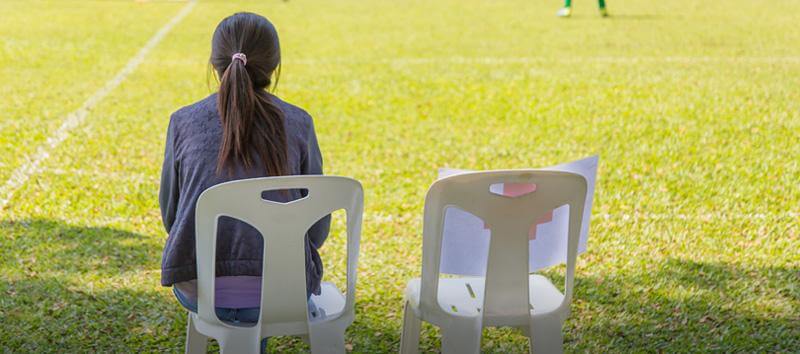
With the knowledge that many players don’t take themselves out of the game for evaluation, it’s up to coaches, athletic trainers, teammates, and family members to look for signs of concussion in players. Here are some things to look for:
- After getting knocked down, does the player take a longer time than usual to get up? Are they staggering after they get up?
- Are they holding their head or neck? Shaking their head? Adjusting their helmet a lot? These actions can indicate blurry vision that the player might be trying to shake off.
- Can they answer simple questions like, “What day is it? What’s the score? What are you doing?”
- Can they close their eyes and balance on two feet?
- Did they experience a big change in attitude or mood? For example, when a normally easygoing person suddenly becomes very angry or aggressive, this is a sign that something is wrong.
Many youth and high school teams don’t have the benefit of medical personnel or athletic trainers on the sidelines, and in a busy game, it’s hard to notice everything that happens. It’s important for family, friends, and teammates to be on the lookout for signs that something’s not right.
Sideline Tests
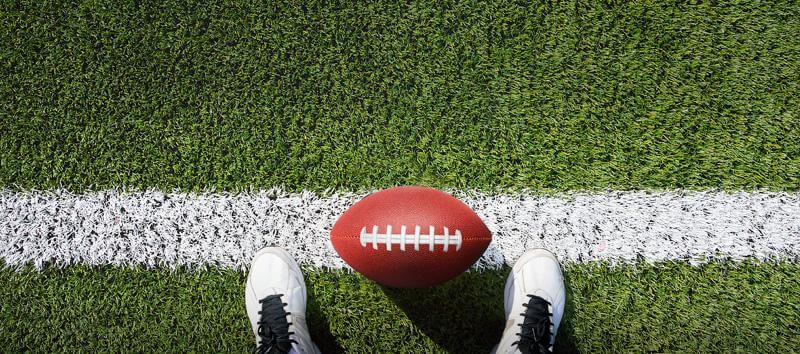
There are some standardized tests that can be quickly used to help identify a possible concussion on the sidelines. These testing methods don’t prevent concussions, but they go a long way in preventing players from continuing to play with one.
- ImPACT is a 20-minute neurocognitive test that can be used for baseline and post-injury evaluation. It measures visual and verbal memory, reaction time, and processing speed. These are all good indicators of brain impairment due to a concussion. A computer or laptop with internet access is needed to administer the test. It is useful when athletes take a pre-season test to which they can compare their performance if they are injured. Many sports medicine and concussion clinics offer ImPACT testing.
- SCAT tests are detailed, five-step standardized assessments to evaluate athletes for suspected concussions on the sidelines. They need to be administered by a physician or other licensed healthcare professional. They can also be administered as a baseline test. The SCAT5 is designed for athletes aged 13 years and older. The Child SCAT5 is designed for children 5 to 12 years of age. The Concussion Recognition Tool 5 (CRT5) is a guideline for others to use to help identify possible concussions in all ages.
- The Balance Error Scoring System Test (BESS) takes about 10 minutes to administer. This test has been shown to be a reliable method of indicating that a concussion has taken place. Difficulty with balance is a sign that the basal ganglia isn’t functioning properly, which is a good indicator of a concussion.
- Eye tracking devices can detect vision abnormalities that are often associated with concussions:
- SyncThink has developed a portable, lightweight device that records and assesses eye-tracking impairment using virtual reality. It can be used in vision therapy and as a baseline screening test. Researchers at Stanford University are using this device to study its effectiveness in diagnosing sports concussions in high school athletes.
- Oculogica received FDA approval in 2019 to market its new product: EyeBox. EyeBox is a 4-minute eye-tracking test that doesn’t require a baseline test to diagnose a possible concussion. Oculogica claims that the EyeBox test is completely objective and can’t be “gamed” by the person being tested.
Subjective and objective concussion evaluations are vital to immediately identifying players who have possibly sustained a concussion and removing them from play. Ultimately, however, awareness of the long-term effects of concussions and of the dangers of continuing to play with a concussion will go a long way in improving the safety and health of football players.
Recovering From a Football Concussion
How Long Does Recovery From a Football Concussion Take?
“How long am I out?” is probably the most common question we get from football players at Cognitive FX.
Unfortunately, there’s no set answer to that question. Some people’s symptoms resolve within days. Others take longer. One study reports that just over 50% of high school athletes commonly return to play within 1 to 3 weeks of injury. In general, collegiate athletes recover and return to play sooner than high school athletes. For reference, 1-2 weeks is a normal recovery time, but since every concussion is different, so is every recovery.
We know athletes are eager to get back into the game as soon as possible, but your long-term health is critical. Be patient while you work toward recovery.
What Can You Do While You’re Waiting?
Players also often ask us if they can do more than what the protocols allow. The answer to that is “No.” It’s important to follow concussion protocols and the recommendations of concussion specialists. We know that athletes with one concussion are much more likely to sustain another. This is not something you want to risk while you’re still recovering.
The only caveat to that answer is if you are advised to completely “cocoon.” This well-meaning but outdated advice instructs those with a concussion to retreat to a dark room and to avoid all mental and physical stimulation until their symptoms disappear. We now know that there are better ways to treat a concussion.
However, there are things you can do (with your doctor’s permission) to stay involved with football and your team while you’re recovering. Depending on your symptoms, some options are:
- Watch game films
- Review game plans and plays
- Do some light, limited exercise on an exercise bike
- Run lines or practice play sets out of harm’s way, on the sidelines.
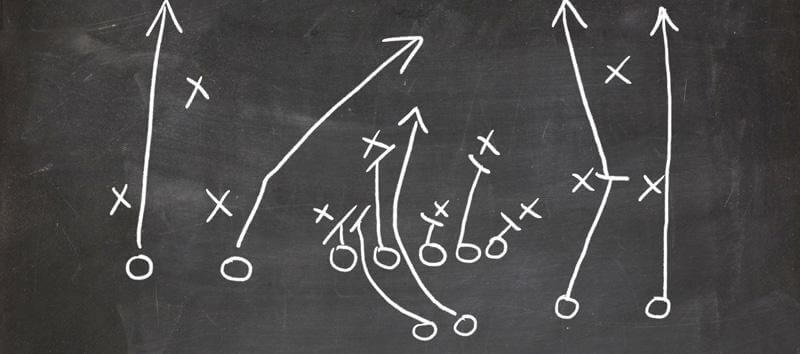
Any activities need to be at what we call the “sub-symptom” level. That means that whatever you do does not cause your symptoms to increase beyond what they already are. Increasing symptoms is a sign to back off. If you’re not sure how much exercise after a concussion is safe, read our post about exercising safely after a concussion.
Sometimes, the mental and emotional aspects of recovering from a concussion are just as difficult as the physical ones. Athletes devote so much time and energy to a sport that it really becomes a part of their identity. When that’s taken away or questioned, it can be very difficult. We’ve written a post about how to handle those aspects of sports-related concussions that can provide you with some helpful advice.
Post-Concussion Syndrome: What If My Symptoms Don’t Go Away?
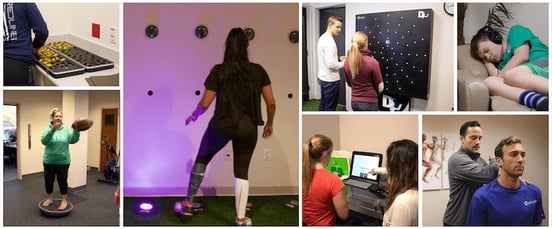
Sometimes, even though you do everything right, concussion symptoms just don’t go away. If your symptoms persist beyond a few weeks, you might be suffering from post-concussion syndrome (PCS). During PCS, your brain, for whatever reason, hasn’t returned to its pre-injury, efficient way of operating, which means your symptoms won’t go away by themselves.
We’ve written extensively on some of the symptoms you may experience from PCS, such as difficulty sleeping, brain fog, headaches, and trouble exercising. Some patients experience debilitating symptoms, while others are able to tolerate work and school within certain limitations.
At Cognitive FX, we help hundreds of patients every year recover through our EPIC treatment program. Our program begins with a functional Neurocognitive Imaging scan (fNCI), a type of functional MRI, which is able to detect specific areas of injury in your brain. We then tailor a treatment plan of physical and cognitive therapy to focus on those areas of injury.
Recovery doesn’t end at our clinic, though. We send you home with a post-care plan of action so you can continue working toward better health at home.
If you’d like to learn if you’re eligible for the program, schedule a consultation.
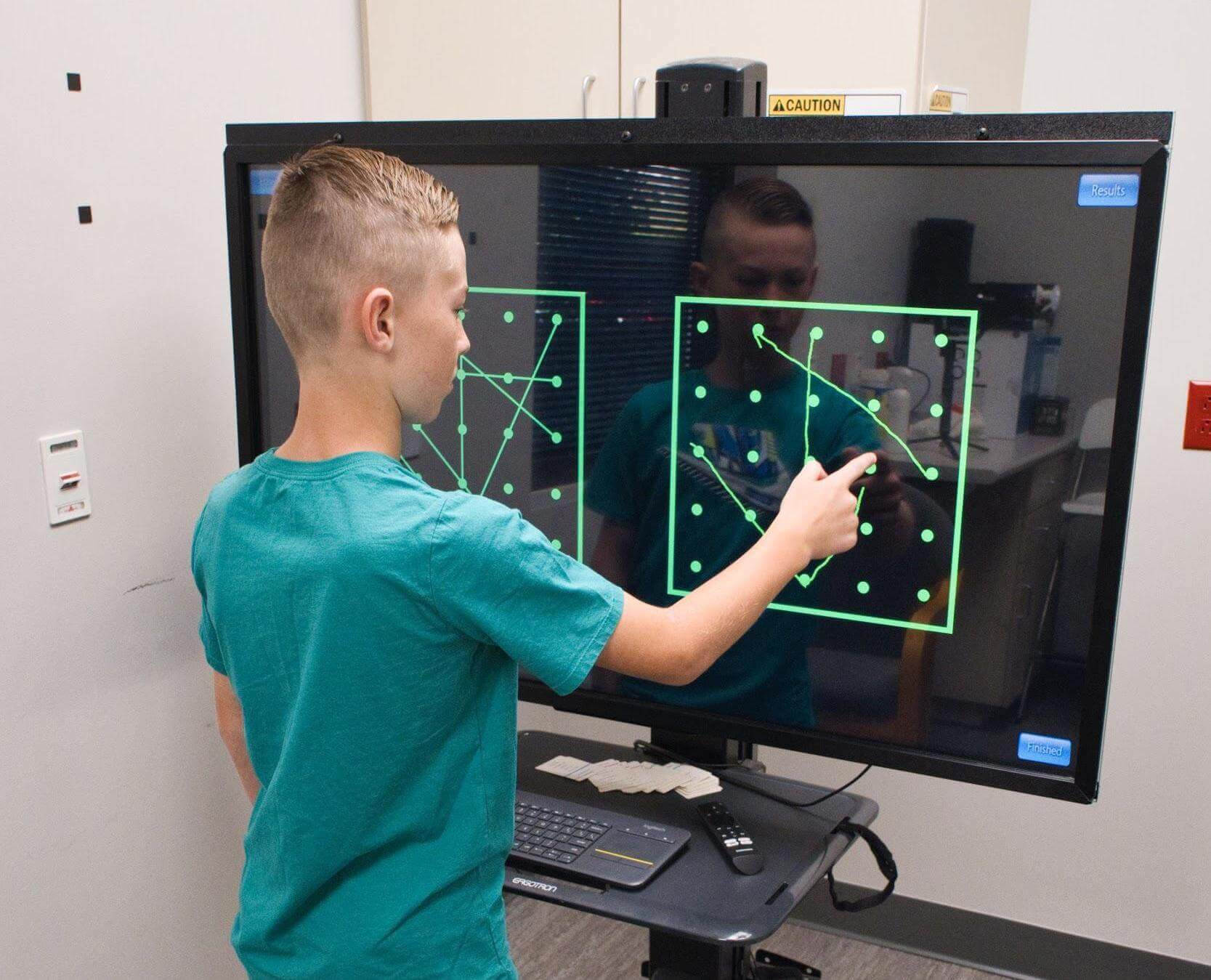

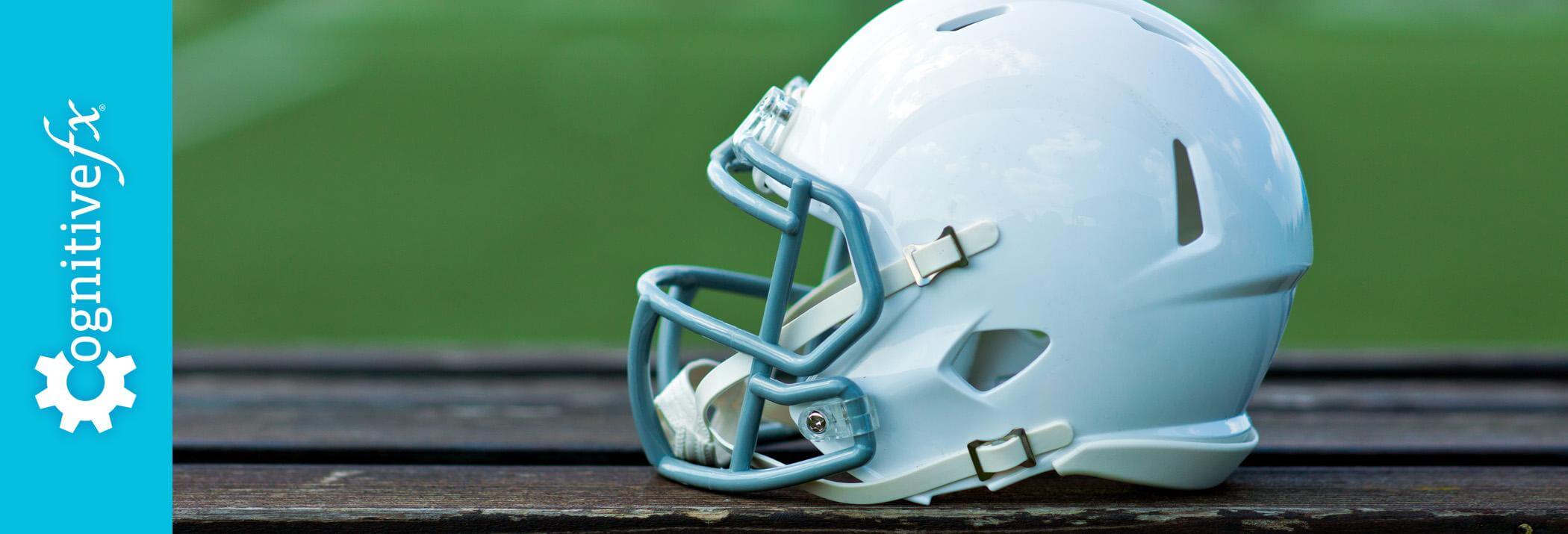

.jpg?width=1000&height=445&name=shutterstock_124650124%20(1).jpg)


.jpg?width=1000&height=445&name=shutterstock_1926517%20(1).jpg)











